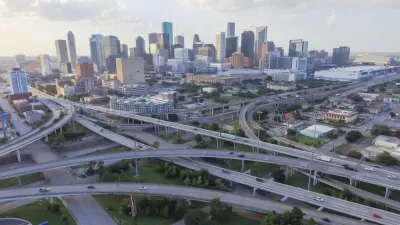The unique growth and challenges facing large cities in the U.S. Sun Belt will require a break from the kinds of policies generated to serve Northeastern and Midwestern cities over the course of U.S. history.

"That future can be seen now in the cities of the Urban Sun Belt — the 22 metropolitan statistical areas in the Sun Belt with a population of 1 million people or more," according to an article published by the Kinder Institute for Urban Research.
The article previews a new white paper from the Kinder Institute, titled "The Urban Sun Belt: An Overview," which "explores the interconnected opportunities and problems facing these large, young and quickly growing metro areas and how they differentiate them from the big cities of the Rust Belt and Coastal/Mountain regions of the U.S."
One of the prominent features of the biggest Sun Belt metropolitan areas is their quick growth, which includes quick growth in low-income populations. Meanwhile, affordability, a major selling point for many of these cities during the growth of recent decades, is slipping away.
For solutions to the challenges facing Sun Belt cities, the report suggests a new kind of urban policy, tailored to the unique qualities of those cities. "Many of the challenges facing the Urban Sun Belt are very specific to those metros. Making it more difficult to meet these challenges, according to the report, is the fact that most American urban policy is still crafted — and policy research is still conducted — with traditional Northeastern and Midwestern cities in mind," according to the article.
FULL STORY: Large, young and fast-growing Sun Belt metros need urban policy innovation

Maui's Vacation Rental Debate Turns Ugly
Verbal attacks, misinformation campaigns and fistfights plague a high-stakes debate to convert thousands of vacation rentals into long-term housing.

Planetizen Federal Action Tracker
A weekly monitor of how Trump’s orders and actions are impacting planners and planning in America.

In Urban Planning, AI Prompting Could be the New Design Thinking
Creativity has long been key to great urban design. What if we see AI as our new creative partner?

How Trump's HUD Budget Proposal Would Harm Homelessness Response
Experts say the change to the HUD budget would make it more difficult to identify people who are homeless and connect them with services, and to prevent homelessness.

The Vast Potential of the Right-of-Way
One writer argues that the space between two building faces is the most important element of the built environment.

Florida Seniors Face Rising Homelessness Risk
High housing costs are pushing more seniors, many of them on a fixed income, into homelessness.
Urban Design for Planners 1: Software Tools
This six-course series explores essential urban design concepts using open source software and equips planners with the tools they need to participate fully in the urban design process.
Planning for Universal Design
Learn the tools for implementing Universal Design in planning regulations.
Gallatin County Department of Planning & Community Development
Heyer Gruel & Associates PA
JM Goldson LLC
City of Camden Redevelopment Agency
City of Astoria
Transportation Research & Education Center (TREC) at Portland State University
Jefferson Parish Government
Camden Redevelopment Agency
City of Claremont




























